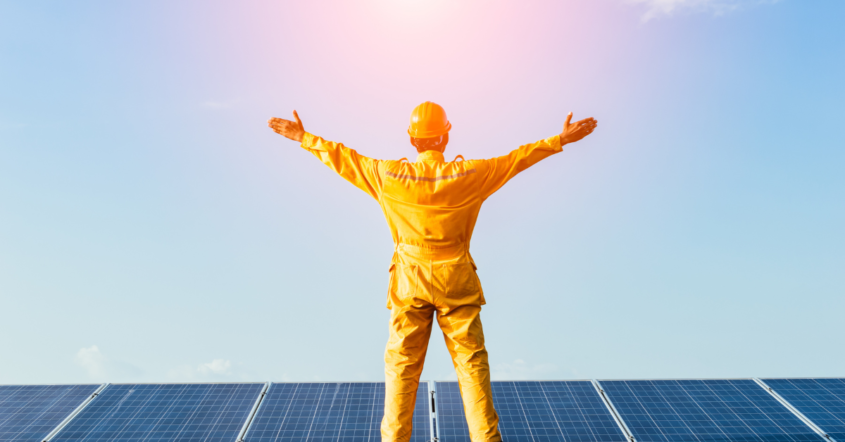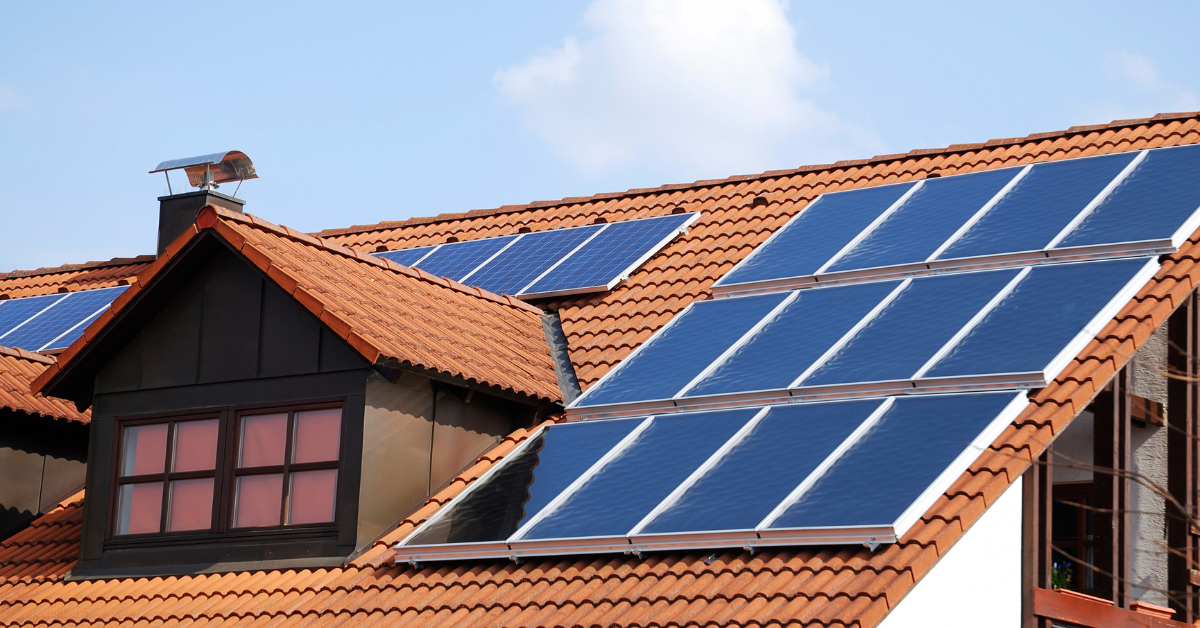Solar energy: myths and facts you need to know

There are many false legends surrounding photovoltaic systems that cast doubt on their effectiveness. Before we get to the heart of the matter, let us explain how a photovoltaic system works!
The elements that make up this system are essentially four: solar panels, the inverter, the bidirectional meter and the national electric grid, or additionally, the storage system.
In simple terms, the panels absorb solar energy during the day and transmit it to the inverter, which converts it into electrical current.
This current passes through the bidirectional meter, allowing you to use household appliances (washing machine, refrigerator, air conditioner, etc.) or other work tools (computer, office lighting, etc.).
In this article, we will help you to understand the significant advantages of solar energy technology and debunk the most common myths!
High cost
One of the most common misconceptions about solar energy is the belief that installing solar panels is prohibitively expensive.
While it’s true that the initial investment can be significant, it’s essential to view it as a long-term investment. Over time, solar panels can significantly reduce or eliminate your electricity bills, saving you money in the long run.
Furthermore, the cost of solar panels has been steadily decreasing over the years, making them more affordable than ever. Government incentives, tax credits and rebates are also available in many regions, further reducing the financial burden of going solar.

Too much maintenance
Another myth that dissuades people from adopting solar energy, is the misconception that solar panels demand extensive and costly maintenance. In reality, solar panels are incredibly durable and require minimal maintenance!
Modern solar panels are designed to withstand harsh weather conditions and their lifespan can extend well beyond 25 years.
Routine maintenance typically involves cleaning the panels periodically to remove dust and debris, which can be easily done with a hose and a soft brush; in addition, many solar companies offer warranties and monitoring systems to ensure the panels’ optimal performance.
Takes up too much space
Photovoltaic panels are constructed to strike the right balance between the size of the structure (home or business) and the highest possible efficiency.
This results in much more practical and compact solar panels, so you no longer have to worry about space while still enjoying maximum performance.
Some individuals believe that solar panels consume a vast amount of space, making them impractical for homes and businesses with limited land or rooftop space.
However, this is far from the truth. Solar panels come in various sizes and configurations and experts can design systems that maximize energy production while using minimal space.
Additionally, advancements in solar technology, such as high-efficiency panels and solar tracking systems, have improved energy production from smaller installations.
Solar companies are continually innovating to make solar panels more space-efficient and accessible to a broader range of consumers.
Unused energy is wasted
During the day, the system absorbs solar energy and the inverter converts it into current for the operation of various appliances. But what happens during the night?
It’s simple, the energy isn’t lost but can be fed into the national electric grid, benefiting from the grid tie-in service, which transforms the electrical system into a kind of virtual storage for unused electricity produced.
Alternatively, we recommend considering storage batteries; this type of system allows you to store energy in a special battery and use it immediately during hours when there is no sunlight, ensuring 24/7 electricity.
A prevalent myth is that any excess energy generated by solar panels during the day goes to waste when not immediately consumed. In reality, surplus energy can be stored or fed back into the grid.
Net metering, a common practice in many regions, allows homeowners and businesses to send excess energy back to the grid in exchange for credits on their electricity bills.
This means that even on cloudy days or during nighttime, you can utilize the credits earned during sunny periods. Alternatively, solar energy storage systems, like batteries, enable you to store excess energy for later use, providing uninterrupted power supply.
Only suited for sunny locations
Here’s a common misconception to dispel. You might think that photovoltaic panels can achieve their maximum efficiency only in places with intense solar heat; well, that’s not quite true!
Solar panels absorb light, not heat, so don’t believe that they are useless after the summer months or if you don’t live in coastal areas. In fact, they work even better when the heat isn’t too intense.
During their normal operation, the cells have a temperature of around 20-25°C. Some people believe that solar panels are only effective in regions with abundant sunshine, rendering them impractical in areas with frequent cloud cover or colder climates.
However, solar panels can generate electricity even on cloudy or overcast days.

Solar energy is inefficient
There is a misconception that solar energy is an inefficient source of electricity production, often compared unfavorably to traditional fossil fuels.
However, solar technology has made significant advancements in recent years, making it a highly efficient and sustainable energy source.
High-efficiency solar panels are now widely available, converting a higher percentage of sunlight into electricity.
Moreover, research and development continue to improve solar cell technology, increasing efficiency and reducing costs.
In many cases, solar energy can provide a substantial portion of a home or business’s energy needs.
Solar panels harm the environment
Some individuals worry that the production and disposal of solar panels have a negative impact on the environment, offsetting the benefits of clean energy generation.
While it’s true that the production of solar panels does have an environmental footprint, the long-term environmental benefits of solar energy far outweigh these concerns.
Solar panels produce zero greenhouse gas emissions during operation, reducing the reliance on fossil fuels and mitigating air pollution.
Moreover, the carbon footprint of solar panel production has been decreasing as the industry adopts more sustainable manufacturing practices.
Recycling programs for solar panels are also emerging, ensuring that old panels are disposed of responsibly.
Solar energy is a viable and sustainable solution for our growing energy needs, but it is essential to dispel the myths that surround it.
By understanding the facts about solar energy, we can harness its potential to reduce our carbon footprint, save money, and contribute to a cleaner, more sustainable future.
As solar technology continues to advance and become more accessible, it is clear that solar energy is not just a passing trend but a crucial part of the global transition to renewable energy sources.
Embracing solar power is not only environmentally responsible but also financially beneficial for individuals and businesses alike. It’s time to debunk the myths and embrace the undeniable potential of solar energy.



